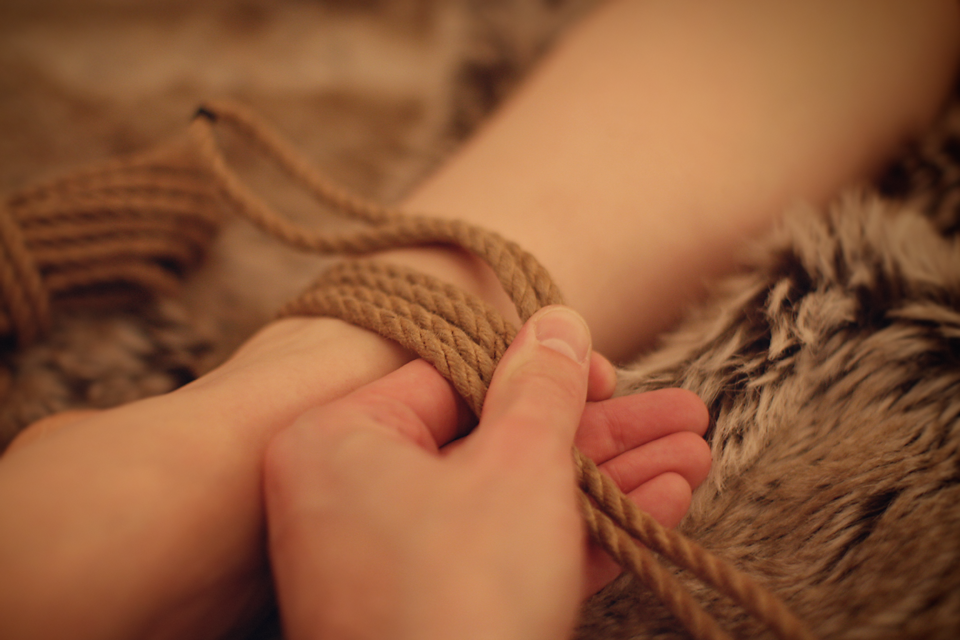Week 02 of 52 : Somerville Bowline Directionality
I haven't seen all that much written about directionality in the Somerville Bowline (aka: Carrick Bend) but in many circumstances there is most definitely a right and wrong direction for the tie. Get it the wrong way around and you find the knot folds back on itself, an effect which is neither comfortable, nor aesthetically pleasing.
The following video by Esinem provides an excellent explanation of the issue, albeit not specifically referencing the Somerville Bowline, but it makes it very clear why direction matters.

Effect of direction of shibari single column tie
The direction in which the working end of the rope exits the tie will depend on a number of factors, including the knot being used, whether you make your wraps up or down the column, and whether you wrap the column clockwise or anti-clockwise. There are probably times when it doesn't matter, and you can simply base your next move on the direction of the knot, but we've found there are other occasions where we very definitely want the knot oriented in a specific direction.
We have been following the steps below and so far this method appears to ensure that the working end of the rope always exits the knot in the direction we expect.
Compare the photos below to our previous example: 01. Somerville Bowline (Carrick Bend). In that photo-set the working end exits outwards and upwards; one of our favourite futomomo ties begins with that knot. However, in the example below we envisage a scenario where a left ankle is to be tied to the bottom corner of a bed and so the exit-direction needs to be outwards and downwards.

We begin by tossing the bulk of the rope in the direction the line needs to exit from the knot.
Sticking with the scenario above, that means we cast the rope towards the bed-post and bring the bight across the ankle in exactly the opposite direction. For me, this is the simple beauty of this approach. Before doing anything you can immediately see that the rope is going to exit the knot in the correct direction.

Make your wraps heading away from the exit-direction of the knot. In this example we want the rope to exit downwards, so we wrap upwards.

Form a small loop around the bight (see previous article: 01. Somerville Bowline) and complete the knot.

You should find the working end of the rope now exits the knot in the expected direction.
For the four combinations, outwards-downwards, inwards-downwards, inwards-upwards, and outwards-upwards, the method above has always turned out as we expected. Do feel free to add a note in the comments if you think there may be conditions where this rule-of-thumb would go awry.
References
We feel like the courses at ShibariClasses are giving us a really solid grounding in the basics of this beautiful art, and the Somerville Bowline is covered in the following course:
Don't forget to pick up some authentic shibari supplies at Esinem-Rope.
Next week we're tying a single wide column, such as a waist or thigh. (Note from Judy: "My thighs are not that wide you cheeky bugger!!") Y'all come back now... d'you hear! ;-)






